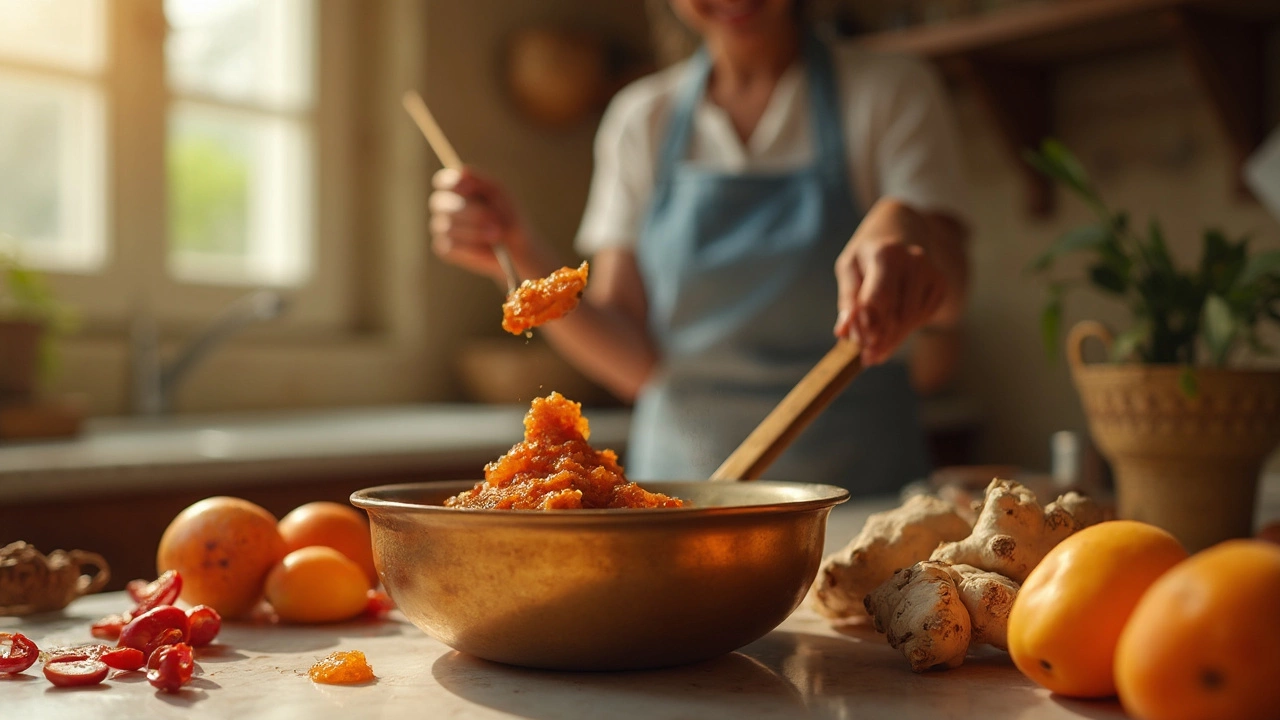Chutney Thickness: Get the Perfect Consistency Every Time
If you’ve ever made chutney that’s too runny or too thick, you’re not alone. A good chutney should cling to your spoon, not pool on the plate. Below are easy ways to control the texture, whether you’re cooking a coconut chutney, tomato chutney, or a quick raw version.
Lid On or Off? The Simple Rule
When you simmer a cooked chutney, the lid makes a huge difference. Keep the lid off if you want it to thicken fast. The steam escapes, the liquid reduces, and you end up with a thicker dip. If you need a looser sauce for pouring, put the lid on and let the steam stay inside.
For pressure‑cooked chutneys, the lid stays on throughout the cooking time. Once the pressure is released, you can quickly check the consistency. If it’s still watery, remove the lid and let it boil uncovered for a few minutes.
Fast Ways to Adjust Chutney Thickness
1. Reduce the liquid. Add a splash of water or coconut milk at the start, then simmer uncovered until it reaches the desired consistency. This works best for tomato or onion based chutneys.
2. Blend in thickening agents. A handful of roasted peanuts, roasted chana dal, or even a spoonful of roasted gram flour can be blended in. They absorb excess moisture and add a nutty flavor.
3. Use a slurry. Mix 1 teaspoon of cornflour with a little cold water and stir it into the hot chutney. Cook for another minute and you’ll see it thicken instantly. This is handy for quick kitchen fixes.
4. Let it rest. Some chutneys, especially raw ones made with fresh herbs, thicken after sitting for 10‑15 minutes. The fibers absorb the juice, giving a smoother texture.
5. Add a little yogurt or curd. For South Indian coconut chutney, a spoonful of thick yogurt not only cools the heat but also firms up the dip without changing the taste.
6. Control the grind. A coarse grind leaves more texture and appears thicker, while a fine grind can look thinner. Adjust the grinding time based on the look you want.
7. Season at the right time. Salt draws out water from vegetables. Add salt halfway through cooking, then taste and adjust. Too much salt early on can make the chutney watery.
8. Use the right pan. A heavy‑bottomed pan distributes heat evenly, preventing hot spots that cause uneven thickening.
9. Freeze and thaw. If you have leftover thin chutney, freeze it in ice‑cube trays. When you thaw a cube, the solids settle and the liquid separates, giving you a thicker portion to use.
10. Finish with tempering. Adding a quick temper of mustard seeds, curry leaves, and a drizzle of oil at the end can change the perception of thickness, making the chutney feel richer.
Remember, the goal is a chutney that sticks to your dosa or sandwich without dripping off. Test it with a spoon: the chutney should coat the back and drip slowly.
Try these tips the next time you make chutney. You’ll spend less time staring at a watery bowl and more time enjoying the flavor. Happy cooking!
How Thick Should Chutney Be When Cooking?
Wondering about the perfect thickness for chutney? This article uncovers what to look for as your chutney cooks up, why consistency matters, and how to nail that just-right texture. Packed with clever tips and practical advice, it’ll help you solve common chutney blunders—whether you like it spreadable or pourable. Learn some little-known truths about sugar, pectin, and cooling, so you never end up with a runny or rock-hard batch again. Guaranteed to make your next chutney deliciously on point.
